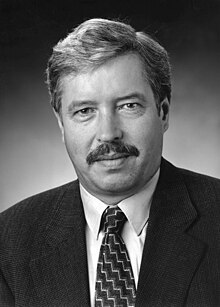Early life
Ryska was born in Hau on the Lower Rhine in 1948, the son of the technician and operating engineer Ferdinand Ryska. He attended high school in Kleve. After graduating from high school in 1967, he completed his military service, e.g. in the communications center of the 1st Corps of the German Armed Forces in Münster where he learned how to use encryption technology. In the winter semester of 1968/69, Ryska studied English and Romance languages in Münster and from the summer of 1969 he continued his studies in philology for three further terms at Bonn University. From the winter semester of 1970/71 he studied mathematics and computer science. The mathematician Friedrich Hirzebruch was one of his professors. In the summer of 1976, Ryska received a diploma in mathematics. During his studies he had part-time jobs for Inter Nationes, the German Bundestag and the Reuters news agency. [1]
On November 1, 1976, Ryska joined Nixdorf Computer AG (NCAG) in Paderborn. His most important work in the years that followed was a security system for ATMs. He was then responsible for the coordination of national and European funding projects in the NCAG Research and Development department and was responsible for public relations. [2]
After the merger of NCAG with the data and information technology division of Siemens AG to form Siemens Nixdorf Informationssysteme AG (SNI) on October 1, 1990, Ryska continued to oversee funding projects at the SNI. [3] From April 1, 1992, he worked on the project of a computer museum. The Westphalia Foundation, founded by Heinz Nixdorf, appointed Norbert Ryska to the project team for a computer museum in 1992. [4] On April 1, 1993, he became managing director of the non-profit Forum für Informationstechnik GmbH. [5]
With the exhibition designer Ludwig Thürmer and the architect Gerhard Diel, Ryska completed the transformation of the NCAG headquarters into the Heinz Nixdorf MuseumsForum. [6] He led the team that selected exhibits and created texts, images and films. When it opened on October 24, 1996, he was one of the two managing directors alongside Theodor Rode and was responsible for the permanent exhibition, the media department and technical staff. From 1997 to 2017, his co-managing director Kurt Beiersdörfer was responsible for marketing, events and museum education as well as for several special exhibitions. [7]
Together with Wolfgang Back (WDR), Ryska realized three WDR computer nights at the HNF in 1998, 1999 and 2001. [8] In 2001, Ryska created a section on the history of cryptology; [9] in 2004 he created a cryptology archive. In 2002 he initiated the multimedia presentation “Wall of Fame”, which was finished in 2004. [10] In the same year, Ryska was able to convince the Nixdorf Foundation Board for his concept of an extensive expansion and update of the permanent exhibition to acquire and implement the areas of "Interfaces-Kommunikation mit der Maschine" ("interface communication with the machine"), "Künstliche Intelligenz und Robotik" ("artificial intelligence and robotics"), "Mobile Kommunikation" ("mobile communication"), "Digitale Welt" ("digital world"), "Showroom – Technik von morgen" ("showroom – technology of tomorrow"). In 2007, Ryska and the HNF participated in the Bletchley Park Computer Museum's Cipher Event. [11] [12] In the same year he created an exhibition on software and computer science. Between 2008 and 2012 he organized “Zahlen, bitte!” (“numbers/pay, please!”) [13] a special exhibition on mathematics, “Codes und Clowns” (“Codes and Clowns”) on Claude Shannon and “Genial & Geheim” ("Ingenious & Secret") on Alan Turing. August 30, 2013 was Ryska's last day at HNF. He then engaged in private historical research. [4]
The founding process of the development of a "computer museum" initiated by the Nixdorf Foundations (1992), which was to include the collection and product history of Nixdorf Computer AG (1992–1996), was moderated to a large extent by Ryska. In cooperation and consultation with more than 100 national and international experts (from science, technology, education, design and politics, including Rolf Oberliesen), he tried to combine the development and design of a museum with a public forum, for which previously there have been no models worldwide in relation to existing modern technology or company museums. [1]
He took on the task of combining the design and implementation of this still vague founding idea for a museum, consisting of existing technical artefacts (special information and communication technology collections) with an open forum. He led a difficult conceptual coordination process between previous company interests and public ideas and social demands. With a group of interior architects, designers and multimedia programmers, he succeeded in connecting a technology museum and a forum in the design of 60 identified exhibition areas. [14] : 32–43
Together with Ludwig Thürmer and Gerhard Diel, a coherent concept for these presentations in the building of the former Nixdorf headquarters in Paderborn was developed. Right from the start, the focus was on a specific conceptual openness of the museum as a background for further specialist exploration and current issues of the forum. [15]
An open, non-linear presentation concept was realized that presented both the before and after one another as well as the simultaneity in concrete historical and social contexts of technological development, also as a basis for further current questions in an interdisciplinary public forum. Here, in a “spatial dramaturgy”, a “experiential museum” was created with “contemporary surroundings” perspectively integrated via “time stations” and a “cultural-historical panorama wall”. [14] : 144 This also appeared as a specific contribution to a socially and ecologically compatible design of technology within the framework of public technology policy dialogues about the future of industrial societies. The presentations, designed over two floors, met a recognized level of high quality standards in terms of content and functionality.
Even before the opening of the MuseumsForum by then Federal Chancellor Helmut Kohl on October 24, 1996, [16] the previous sponsoring company of the Westphalia Foundation renamed the computer museum to "HNF Heinz Nixdorf MuseumsForum GmbH" (1995), also as a consistent confirmation of Ryska's pursued interdisciplinary integration concept of technology presence and forum designed for dialogue. Ryska was appointed managing director of the HNF (1996–2013), where he was able to decisively advance the previous development concept and expand the subject areas. [4]
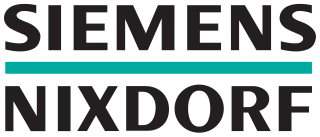
Siemens Nixdorf Informationssysteme, AG (SNI) was formed in 1990 by the merger of Nixdorf Computer and the Data Information Services (DIS) division of Siemens.

Paderborn is a city in eastern North Rhine-Westphalia, Germany, capital of the Paderborn district. The name of the city derives from the river Pader and Born, an old German term for the source of a river. The river Pader originates in more than 200 springs near Paderborn Cathedral, where St. Liborius is buried.
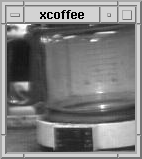
The Trojan Room coffee pot was a coffee machine located in the Computer Laboratory of the University of Cambridge, England. Created in 1991 by Quentin Stafford-Fraser and Paul Jardetzky, it was migrated from their laboratory network to the web in 1993, becoming the world's first webcam.
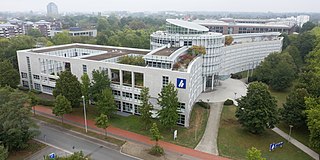
Heise is a German media conglomerate headquartered in Hanover. It was founded in 1949 by Heinz Heise and is still family-owned. Its core business is directory media as well as general-interest and specialist media from the fields of computer technology, information technology and network culture. Another focus of its business activities is portals for price and product comparisons.
Emil Schult is a German painter, poet and audio-visual artist.

PaderbornUniversity is one of the fourteen public research universities in the state of North Rhine-Westphalia in Germany. It was founded in 1972 and 20,308 students were enrolled at the university in the wintersemester 2016/2017. It offers 62 different degree programmes.

Nixdorf Computer AG was a West German computer company founded by Heinz Nixdorf in 1952. Headquartered in Paderborn, Germany, it became the fourth largest computer company in Europe, and a worldwide specialist in banking and point-of-sale systems.

Heinz Nixdorf was a German computing pioneer, businessman and founder of Nixdorf Computer AG.

PainStation is an art object and arcade game based on Pong developed by the artists' group "/////////fur//// art entertainment interfaces", with pain feedback.
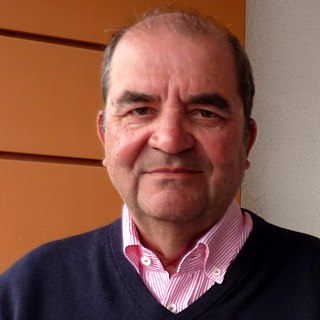
Ulrich Vogt is a German educator and author.
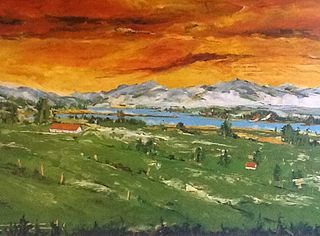
Hans-Jörg Holubitschka was a German painter. He studied at the Kunstakademie Düsseldorf. Holubitschka lived and worked in Düsseldorf. At the Ruhrakademie in Schwerte he taught the subject painting.

Dorothy Toplitzky Blum was an American computer scientist and cryptanalyst. She worked for the National Security Agency and its predecessors from 1944 until her death in 1980.

Klaus Urbons is a German photographer and xerography printmaker. He is a pioneer and leading figure of copy art in Germany and not only. He founded the Museum für Fotokopie, and is the author and translator of books on the history of Copy Art and photocopiers, as well as a curator and a collector.

Wolfgang Händler was a German mathematician, pioneering computer scientist and professor at Leibniz University Hannover and University of Erlangen–Nuremberg known for his work on automata theory, parallel computing, artificial intelligence, man-machine interfaces and computer graphics.

The WDR paper computer or Know-how Computer is an educational model of a computer consisting only of a pen, a sheet of paper, and individual matches in the most simple case. This allows anyone interested to learn how to program without having an electronic computer at their disposal.
Peter Pagé was a German software pioneer. He joined Software AG in Darmstadt in 1971 as one of 6 employees and in 1975 became Vice President of Software AG. Page developed NATURAL as the first fourth-generation programming language, which was instrumental in Software AG's success.
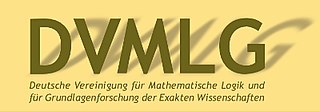
The German Association for Mathematical Logic and for Basic Research in the Exact Sciences is the learned society representing the interdisciplinary research area of Logic (within the disciplines of Mathematics, Philosophy, Computer Science, and Linguistics) in German-speaking countries. It was founded in 1962 by Wilhelm Ackermann, Gisbert Hasenjaeger, Hans Hermes, Jürgen von Kempski, Paul Lorenzen, Arnold Schmidt, and Kurt Schütte. Its members are researchers in Mathematical Logic, Philosophical Logic, and Theoretical Computer Science. Biannually, the DVMLG organises the Colloquium Logicum, an international research conference in logic. The DVMLG forms the National Committee for Logic, Methodology and Philosophy of Science representing the Ordinary Member Germany within the Division of Logic, Methodology and Philosophy of Science and Technology (DLMPST).

The Heinz Nixdorf MuseumsForum (HNF) in Paderborn, Germany, is a computer museums named after the Paderborn computer pioneer and entrepreneur Heinz Nixdorf.

Eric Bodden is a German computer scientist. He holds the Chair of Secure Software Engineering at the Heinz Nixdorf Institute of the Paderborn University and is Director of Software Engineering and IT Security at the Fraunhofer Institute for Mechatronic Design (IEM). He is also head of the engineering department in the Collaborative Research Centre 1119 CROSSING at the Technical University of Darmstadt.
This page is based on this
Wikipedia article Text is available under the
CC BY-SA 4.0 license; additional terms may apply.
Images, videos and audio are available under their respective licenses.
